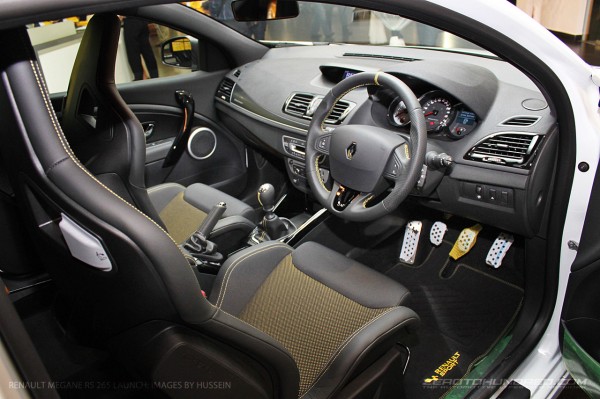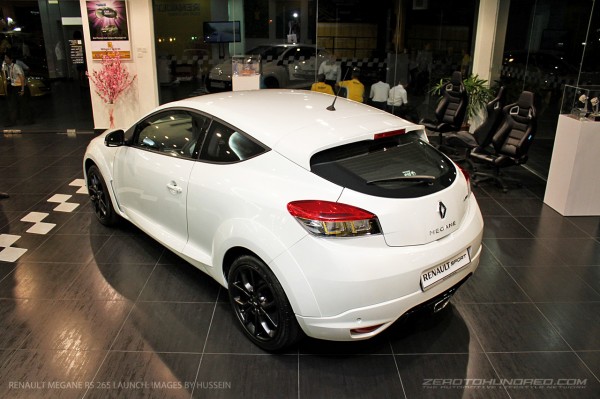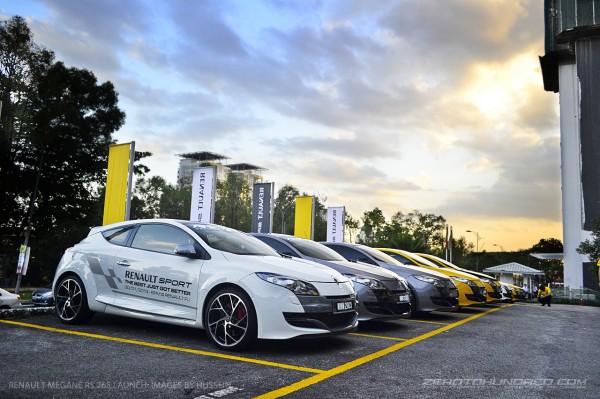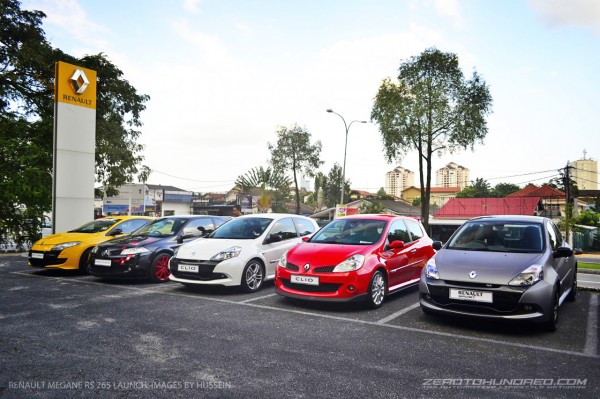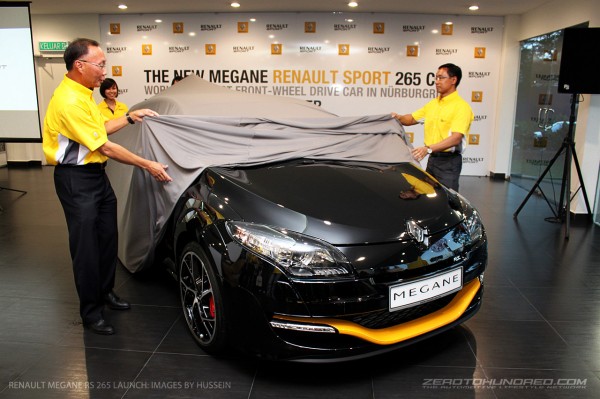When I tested Renault’s Megane RS250 Cup a little while back, I fell absolutely in love with the machine. In truth, there are few rivals to the awesome RS250, whether in straight line prowess or on track, so when Renault announced the arrival of the RS265 Cup, you can imagine that enthusiasts were buzzing with excitement. Touted as the successor to the RS250 Cup, the RS265 Cup maintains the same basic ingredients that made the old car such a joy to drive, except with select enhancements to deliver heightened driving experiences.
So what exactly is new with the RS265 Cup? Well, as its name suggests, power has been bumped up by 15bhp to a maximum power of 265bhp, with maximum torque up by 20Nm to 360Nm. Hardware tweaks include higher boost (up 0.2 bar to 2.5 bar) as well as a revised air-intake to accommodate higher pressure and higher running temperatures. Renault says that the exhaust system has been reworked too, to give a higher, more satisfying pitch at all revs.
There are performance gains, of course – zerotohundred has been shaved to 6.0 seconds (down 0.1 seconds), with top speed now set to 250km/h (up 5km/h). Efficiency has improved too; combined fuel-consumption is a claimed 8.2-litres/100km and 190g CO2/km (down 0.1-litre/100km and 5g/km respectively) over its predecessor, the RS250 Cup. Stopping power remains the same though – 340mm four-pot Brembos; biggest available on any hot-hatch in this segment.
Renault is keen to remind us that the Megane remains king when it comes to production spec FWD vehicles, when out on Sepang. While the RS250 Cup managed 2min 43secs back in 2010, the RS265 Cup has shaved this by a further two seconds to 2min 41secs. During both attempts, the cars were piloted by Denis Lian, former A1-GP Team Singapore driver who mentioned on video, “Like the Megane RS 250, the way the 265 chassis rotates feels like a RWD, but in a more progressive fashion. It helps you to turn into bends quicker and get on the power earlier. Overall the car just felt more resolved. Great car!”.
Other tweakery on the car remain as purely visual aesthetics – there are two rows of six LEDs, darkened headlamps, and new matte-black 18-inch ‘Tibor’ style wheels. You get similar visual treatment on the inside: black lacquer finish on the center console and air-conditioning vents, carbon effect finish on door panel inserts, as well as a pair of bolstered up Recaros up front.
Also launched alongside the RS265 was the Red Bull Racing RB7 car. While the RB7’s hardware remains the same, it receives special finishing – metallic black, with Renault Sport yellow on the F1-style blade, side mirror and rear diffuser, as well as chequered pattern decal on the roof. Only five units will be brought in to Malaysia (from a total of 522 units worldwide); each one special because these will be the only RHD units available. Malaysian units also get a special edition numbered plaque, signed by 2012 World F1 Driver Chamption, Sebastien Vettel.
Prices for the RS265 and RB7 are RM235k and RM243k respectively (OTR without insurance), the latter a slight RM5k increase over its RS250 predecessor. We still think that these are fantastic prices, especially for the sort of performance you’ll get from these track machines, adapted for road use.
In conjunction with the RS265 and RB7 unveiling, was the RS Collectif launch; set up to serve as a platform to link up all Renault Sport owners within the region, and to build a strong RS community. The club also aims to increase awareness of Renault Sport cars in Malaysia via events such as track days (such as McKee’s Festival of Speed, and Zerotohundred’s own Time to Attack) and Sunday morning drives. To further supplement this, TC Euro Cars announced yet another six track days in 2013 for Renault Sport drivers: 16-Feb, 30-Mar, 27-Apr, 8-Jun, 19-Oct, and 22-Dec at Sepang International Circuit.



